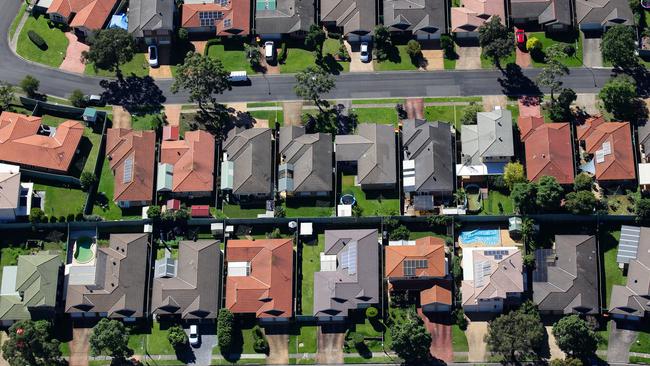Negative gearing not so attractive with low interest rates

Earlier this week a key ATO report highlighted key changes for the 1.3 million investors involved in negative gearing property. It turns out that falling interest rates makes the exercise less attractive. In fact, the proportion of property investors negative-gearing property has fallen below 60 per cent for the first time on record.
As I see it, this is just the start of a decline in the entire negative gearing area which is going to accelerate in the near future.
Negative gearing allows investors to offset investment property losses against other taxable income, such as employment income, to reduce their overall tax liabilities.
There are three main reasons that I believe that tax benefits (savings) resulting from negative gearing will not be as substantial as they have been in the past.
● Firstly, the expansion of federal government debt to over $1 trillion means it must generate more revenue. One way to do that is to curtail allowable tax deductions.
Just over 11 per cent of Australian adults invest in property and 59 per cent of these investors negative-gear. However, only about 2 per cent of Australian adults own two or more investment properties and negative-gear them. So if the government limited negative gearing to say one property, fewer election votes would be at risk.
A more likely outcome would be to introduce a dollar value limit. For example, negative gearing deductions could be limited to $20,000 per year. That is an attractive idea for any government.
● Secondly, historically low interest rates have dramatically reduced negative gearing tax benefits. Allowing for investment property rental expenses such as management fees, maintenance, insurance and so on, net rental yields typically range between 1 and 2.5 per cent. Compare that with interest-only investment rates starting at 2.5 per cent (fixed rates), and it’s easy to see why a rental property’s pre-tax income loss can range from nil (break-even) to 1.5 per cent of a property’s value. Consequently, negative gearing tax savings are also greatly diminished.
Before 2012, when variable interest rates exceeded 6 per cent, a $1m rental property’s pre-tax loss would range between $25,000 and $50,000 and as such, provide substantial tax savings.
A low interest rate environment greatly reduces negative tax benefits in dollar terms. And if interest rates remain low for an extended period, property investors’ tax savings will be greatly diminished, but then so is their pre-tax cashflow loss.
● Finally, it has been widely reported that the Labor Party is likely to support the government’s stage 3 tax cuts, which are set to become effective in 2024-25. This means that there will only be two tiers for taxpayers that earn in excess of $41,000 per year:
A 34.5 per cent tax rate including Medicare between $41,001 and $200,000; and
A 47 per cent tax rate including Medicare over $200,001.
Currently, taxable income between $120,001 and $180,000 attracts a 39 per cent rate of tax. The stage 3 tax cuts benefit taxpayers earning over $120,000, which would include many property investors.
For example, a property investor with annual employment income of $200,000 and $20,000 rental property losses would see their negative gearing savings reduce by over 30 per cent from $9400 to $6400 after July 1, 2024.
Of course, tax benefits reduce the cashflow burden of borrowing to invest in property. But it is very important that your investment strategy works with or without those tax benefits.
To do that you must only invest in high-quality, investment-grade property that exhibit excellent capital growth prospects.
Stuart Wemyss is an independent financial adviser and author of Investopoly & Rules of the Lending Game.
swemyss@prosolution.com



The attractions of negative gearing for property are declining and it’s going to get worse.